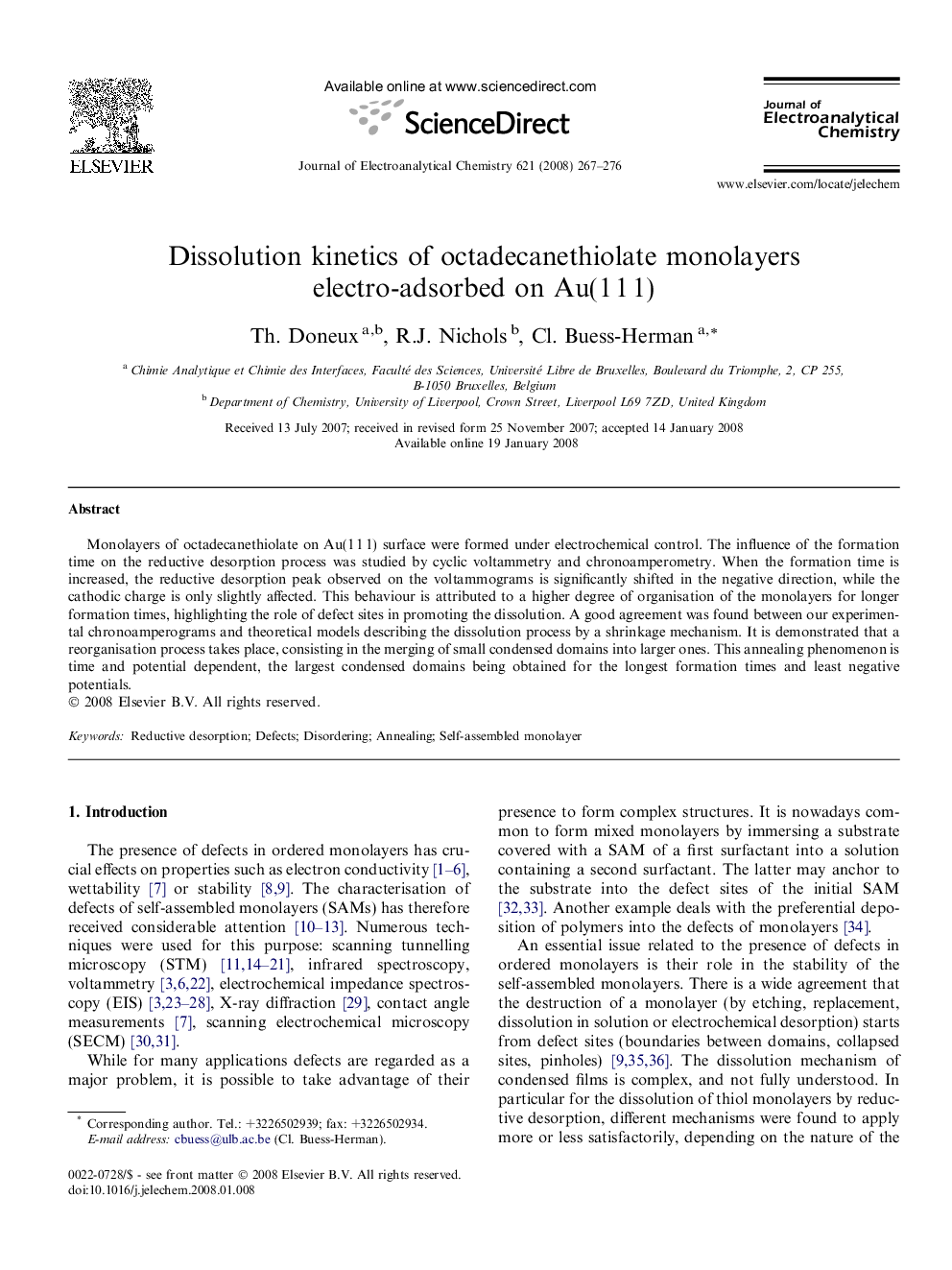| Article ID | Journal | Published Year | Pages | File Type |
|---|---|---|---|---|
| 220453 | Journal of Electroanalytical Chemistry | 2008 | 10 Pages |
Monolayers of octadecanethiolate on Au(1 1 1) surface were formed under electrochemical control. The influence of the formation time on the reductive desorption process was studied by cyclic voltammetry and chronoamperometry. When the formation time is increased, the reductive desorption peak observed on the voltammograms is significantly shifted in the negative direction, while the cathodic charge is only slightly affected. This behaviour is attributed to a higher degree of organisation of the monolayers for longer formation times, highlighting the role of defect sites in promoting the dissolution. A good agreement was found between our experimental chronoamperograms and theoretical models describing the dissolution process by a shrinkage mechanism. It is demonstrated that a reorganisation process takes place, consisting in the merging of small condensed domains into larger ones. This annealing phenomenon is time and potential dependent, the largest condensed domains being obtained for the longest formation times and least negative potentials.
